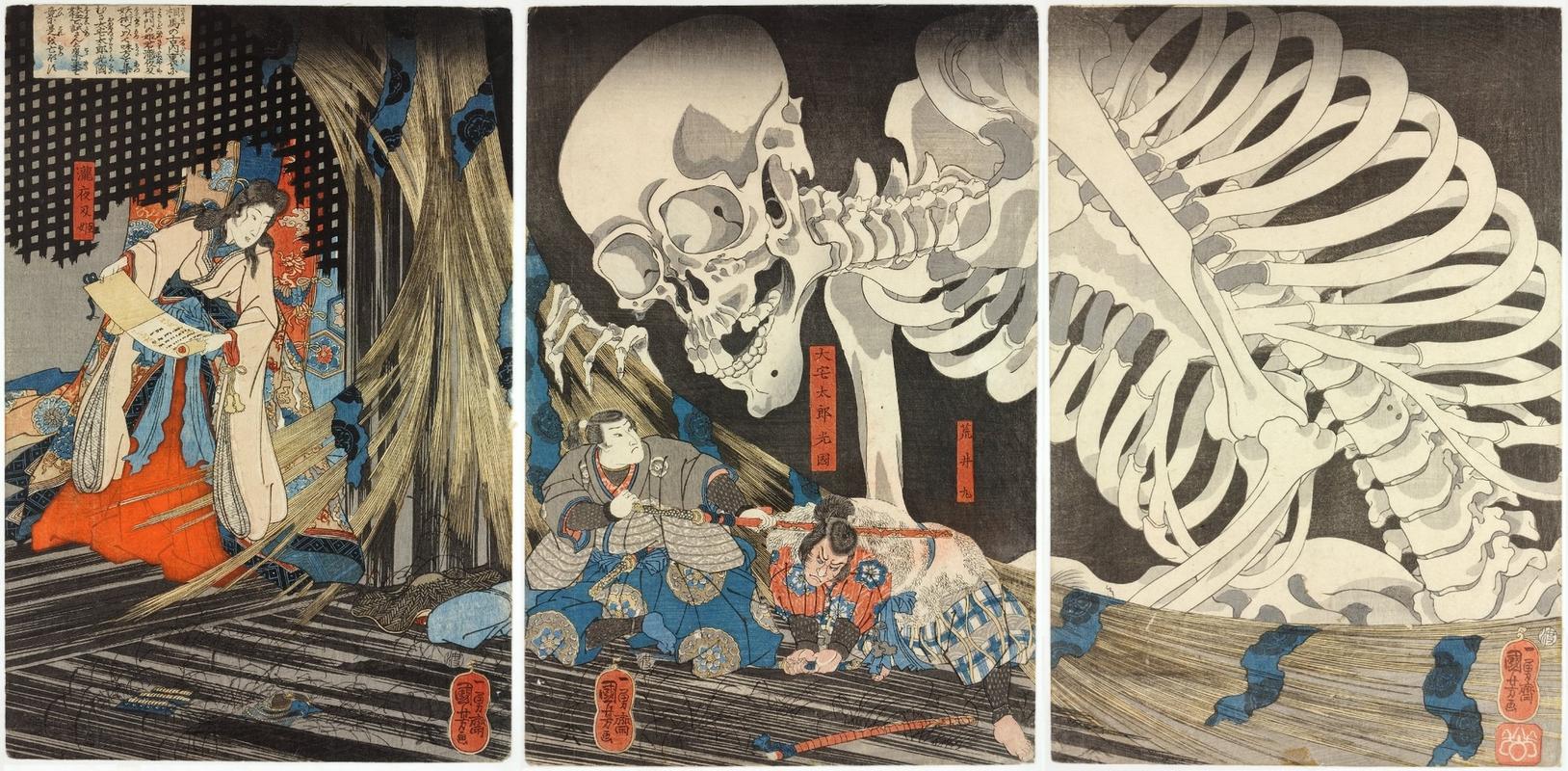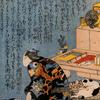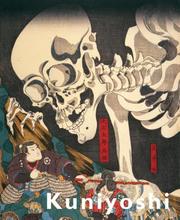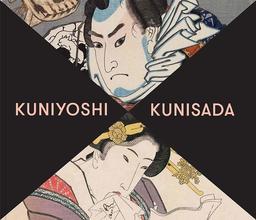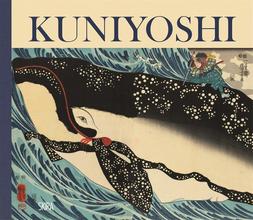More about Takiyasha the Witch and the Skeleton Spectre
- All
- Info
- Shop

Contributor
Utagawa Kuniyoshi's amazing Takiyasha the Witch and the Skeleton Spectre draws from traditional stories compiled by the Edo period writer Santō Kyōden, showing a scene set in Japan over one thousand years ago.
The story begins in the Heian period with Masakado, a member of the Taira clan, who leads a 59-day rebellion against Emperor Suzaku, the 61st emperor, as the leader of a bushi, or party. He makes the gutsy move of attacking other Taira, and the Emperor's men give him a thorough tail-whoopin', presenting his head to his people, who bury it in a fishing village which is today part of Tokyo.
Masakado's daughter, Takiyasha, like a combination of Harry Potter, Natalie Portman in "Leon: The Professional," and Hamlet, comes back with a vengeance, guided by the spirit of her father and her animal familiar, the giant toad, who tutored her in the ancient esoteric arts. Her name, fittingly, means "waterfall demon princess," according to one translation, although the word "demon" would not have the same connotations that it does in English. In various parts of Japan, according to the Shinto faith, people revere Masakado in shrines, and his enshrinement was originally due to both respect for his honorable fighting and fear of his wrathful spirit. At one of his shrines, Kanda, people sell amulets which purport to protect computers and cell phones from crashing, losing data, and even from getting hacked. The Meiji Emperor once removed Masakado from Kanda shrine, because Masakado's a bit of an anti-government guy, but people missed him so much that they restored him to the shrine later on. Masakado has become a kami, an untranslatable word that refers to a divine, unseen spirit or soul that inspires awe, that uncanny, oceanic feeling in your spine which can be joy, fear, or both at the same time.
In this woodblock triptych of the ukiyo-e form, Kuniyoshi portrays a confrontation from Story of Utö Yasutaka by Kyöden, one of the first writers to make a living by writing fiction. According to the version of the same story in the two-hundred-year-old kabuki dance drama "Thieving Night when Love is Blind," Princess Takiyasha learned the magic of the giant toad, "passed down many centuries from the great magician Nikushisen." After a failed attempt to defeat him by seduction, Takiyasha confronts Mitsukuni, a representative of the Emperor, across the three panels, using her giant toad skills to summon the remains of untold numbers of people buried without proper rites, some of whom were casualties of war, others of whom ended up in mass graves after plagues. These lamenting, wandering spirits form like Voltron into Gashadokuro, a big, hungry, terrifying skeleton, harnessing the collective grief of the people to teach readers of the importance of giving a proper burial. Subsequently, riding into battle atop the giant toad, she loses the battle, as her father did, but she sure gives it her all. Like the horrifying stories of the Brothers Grimm, this work frightens us into keeping the boundaries instituted by tradition. Although Kuniyoshi's story is vintage, if you love video games, you've spent many an afternoon locked in a Manicheaen struggle with a "final boss," looming behind the two-dimensional tableau of your avatar's world with all the menace of this anatomically correct skeleton.
Sources
- Brandon, James R., and Samuel L. Leiter. Kabuki Plays on Stage: Darkness and Desire, 1804-1864. Honolulu: University of Hawaii Press, 2002.
- Brandon, James R., and Samuel L. Leiter. Masterpieces of Kabuki: Eighteen Plays on Stage. Honolulu: University of Hawaii Press, 2004.
- "IT情報安全守護." Kandamyoujin, https://www.kandamyoujin.or.jp/sp/omamori/detail/?id=7.
- Kitagawa, Joseph Mitsuo. On Understanding Japanese Religion. Princeton: Princeton University Press, 1987.
- Kleinschmidt, Harald. Warfare in Japan. London: Routledge, 2017.
- 刘立善, 沒有经卷的宗教: 日本神道. 厦门: 宁夏人民出版社, 2005 (Liu Lishan, Religion without Scriptures: Japanese Shinto. Xiamen, China: Ningxia People's Publishing House, 2005).
- Markowitz, Judith A. Robots That Kill: Deadly Machines and Their Precursors in Myth, Folklore, Literature, Popular Culture and Reality. Jefferson, NC: McFarland, 2019.
Featured Content
Here is what Wikipedia says about Takiyasha the Witch and the Skeleton Spectre

Takiyasha the Witch and the Skeleton Spectre or Mitsukuni Defying the Skeleton Spectre Invoked by Princess Takiyasha (Japanese: 相馬の古内裏 妖怪がしゃどくろと戦う大宅太郎光圀) is an ukiyo-e woodblock triptych by Japanese artist Utagawa Kuniyoshi (1798–1861). Kuniyoshi was known for his depictions of historical and mythical scenes, and combined both in portraying the tenth-century princess Takiyasha summoning a skeleton spectre to frighten Ōya no Mitsukuni.
In the image, the princess recites a spell written on a handscroll, summoning a giant skeleton. It rears out of a black void, crashing its way through the tattered palace blinds with its bony fingers to menace Mitsukuni and his companion.
In Japan, the artwork is exposed in the city of Kurashiki, in the UKIYO-E museum. A copy of the print is housed in the Honolulu Museum of Art in the United States, having been donated by its previous owner, Victor S. K. Houston, in 1941.
Check out the full Wikipedia article about Takiyasha the Witch and the Skeleton Spectre

